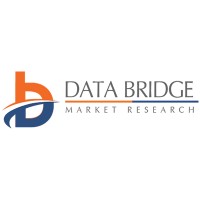
The Future of Sustainable Business: Understanding the Power of an ESG Reporting Platform
Introduction to ESG Reporting Platforms
In today’s business landscape, sustainability has moved from being a corporate buzzword to a strategic necessity. Companies worldwide are under increasing pressure from regulators, investors, and consumers to demonstrate transparency and accountability in their environmental, social, and governance (ESG) performance. This is where an ESG reporting platform comes into play. An ESG reporting platform helps organizations efficiently collect, analyze, and report ESG data to meet compliance requirements and achieve sustainability goals.
What is an ESG Reporting Platform?
An ESG reporting platform is a digital solution that enables organizations to manage their sustainability data in a structured, automated, and transparent manner. It integrates various ESG metrics—ranging from carbon emissions to workforce diversity—into a centralized dashboard. Businesses can use these platforms to generate accurate sustainability reports that align with global standards like GRI (Global Reporting Initiative), SASB (Sustainability Accounting Standards Board), and TCFD (Task Force on Climate-Related Financial Disclosures).
Why ESG Reporting Matters for Modern Businesses
The growing awareness around climate change, human rights, and corporate ethics has made ESG reporting more than just a regulatory exercise. It’s now a business imperative. Organizations that adopt ESG reporting practices can attract investors, enhance their brand reputation, and gain a competitive edge. Investors are increasingly prioritizing companies that exhibit strong ESG performance because such companies are perceived as less risky and more future-oriented. Furthermore, customers prefer brands that demonstrate a genuine commitment to sustainability and social responsibility.
Key Features of an Effective ESG Reporting Platform
A robust ESG reporting platform offers a range of features designed to streamline data collection, ensure accuracy, and enhance decision-making. Some of the most crucial features include:
1. Automated Data Collection: The platform should integrate with existing business systems to automatically capture ESG-related data, reducing manual errors.
2. Real-Time Dashboards: Dynamic dashboards provide instant visibility into ESG performance, helping stakeholders monitor progress and identify areas for improvement.
3. Compliance Management: A good ESG platform keeps businesses aligned with evolving global standards and regulations.
4. Customizable Reporting Tools: Companies can tailor their reports to meet investor, regulatory, or internal requirements.
5. Data Security and Integrity: Since ESG data often involves sensitive corporate information, security and accuracy are critical.
6. Predictive Analytics: Some advanced platforms offer AI-powered analytics to forecast future ESG performance trends and optimize sustainability strategies.
The Role of ESG Reporting Platforms in Achieving Sustainability Goals
Sustainability is no longer just about minimizing environmental impact—it’s about creating long-term value. ESG reporting platforms play a vital role in this process by helping organizations align their business operations with sustainability objectives. For instance, by tracking carbon emissions, energy consumption, and waste management data, companies can identify opportunities to reduce their environmental footprint. Similarly, monitoring social metrics like diversity, employee satisfaction, and community engagement helps organizations foster a positive social impact. Governance metrics—such as board diversity, ethics, and compliance—ensure corporate transparency and accountability.
How ESG Reporting Platforms Benefit Businesses
Adopting an ESG reporting platform provides tangible and intangible benefits for companies across industries.
1. Enhanced Transparency: Stakeholders—including investors, customers, and regulators—gain a clear view of the company’s sustainability performance.
2. Better Decision-Making: With centralized and real-time ESG data, executives can make data-driven decisions that align with long-term business goals.
3. Risk Mitigation: By identifying potential ESG risks early, organizations can proactively address issues that may impact financial or reputational stability.
4. Improved Investor Relations: Many institutional investors now require detailed ESG disclosures before investing. Transparent reporting attracts sustainable investments.
5. Operational Efficiency: Automation reduces manual workloads and improves accuracy, allowing sustainability teams to focus on strategic initiatives rather than data management.
6. Competitive Advantage: Companies that adopt ESG reporting early often position themselves as industry leaders in sustainability and corporate responsibility.
Challenges in ESG Reporting and How Platforms Solve Them
While ESG reporting is essential, it is not without challenges. Many organizations face difficulties due to fragmented data sources, inconsistent reporting standards, and limited visibility into performance metrics. An ESG reporting platform addresses these challenges by consolidating data from multiple departments and providing standardized reporting templates. This eliminates redundancy and ensures consistency across reports. Moreover, automation reduces the time and resources spent on manual data entry, while real-time insights make it easier to identify gaps and opportunities.
How to Choose the Right ESG Reporting Platform
Selecting the right ESG reporting platform is crucial for ensuring effective sustainability management. Businesses should consider the following factors when making a decision:
1. Alignment with Reporting Standards: The platform should support global frameworks like GRI, SASB, and TCFD.
2. Scalability: Choose a platform that can grow with your organization as your ESG goals evolve.
3. Integration Capabilities: Ensure the system can integrate with your existing ERP, HR, and supply chain management software.
4. Ease of Use: A user-friendly interface ensures that all departments can contribute effectively to ESG reporting.
5. Vendor Support: Reliable customer support and regular platform updates are essential for long-term success.
6. Data Analytics: Platforms with advanced analytics capabilities offer deeper insights and predictive modeling for sustainability performance.
Top Trends Shaping ESG Reporting Platforms
The ESG reporting landscape is evolving rapidly, driven by technology and regulatory changes. Some key trends include:
1. AI and Machine Learning: These technologies enhance data analysis, helping organizations predict ESG risks and opportunities.
2. Blockchain for Transparency: Blockchain technology ensures immutable and transparent ESG data records.
3. Real-Time Reporting: Continuous data tracking enables more dynamic and timely reporting, improving responsiveness to ESG challenges.
4. Cloud-Based Solutions: Cloud platforms offer scalability, flexibility, and remote accessibility.
5. Integration of Financial and Non-Financial Data: More companies are combining ESG data with financial performance metrics to demonstrate the business value of sustainability.
Global Regulations and ESG Compliance
Governments and financial regulators across the globe are tightening ESG disclosure requirements. The European Union’s Corporate Sustainability Reporting Directive (CSRD), for example, mandates detailed ESG disclosures for companies operating within the EU. Similarly, the U.S. Securities and Exchange Commission (SEC) is developing new climate-related disclosure requirements. ESG reporting platforms simplify compliance by keeping businesses updated with regulatory changes and providing standardized templates for disclosures.




